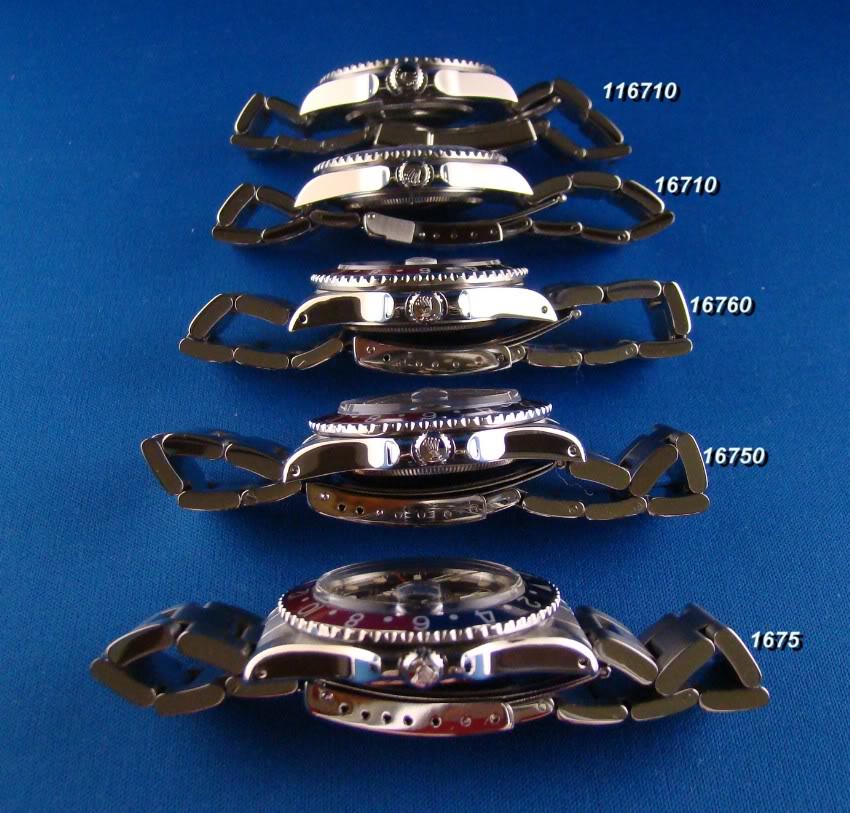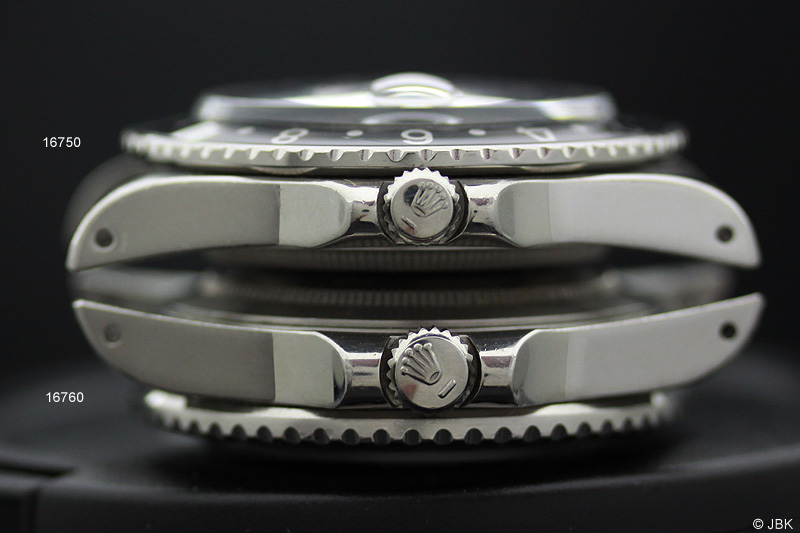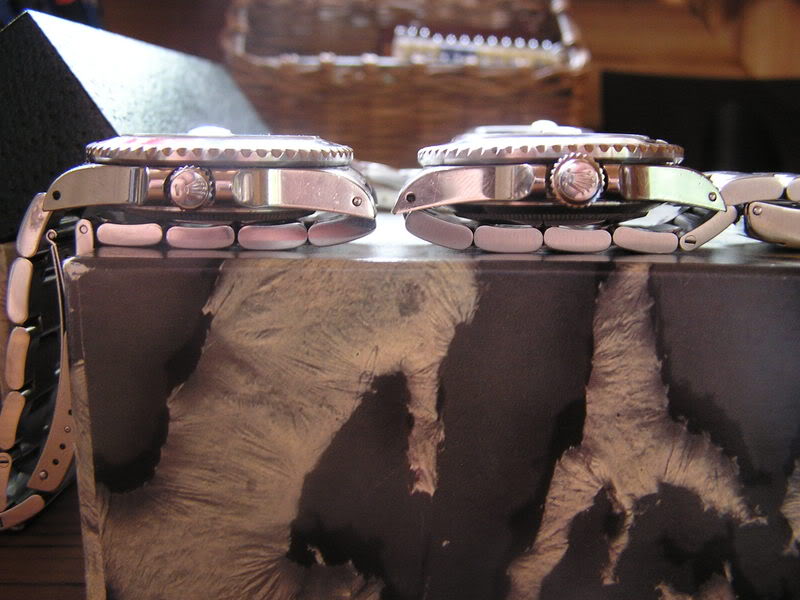ROLEX WATCH CASES COMPARISONS GMT 1675/16760/16710/116710
The customer's demand from the 1930s to the present day has clearly evolved and reflected in the design of the watch itself.
The period from the 30's to the beginning of the 50's offered customers the possibility to wear small diameter watches regardless of gender.
The 1970s saw the appearance of larger cases, up to 42 mm for the Omega SpeedMaster.
The 2000s saw the cases swell to 45 mm.
It is interesting to see here the evolution of the Rolex GMT Master watch case compared to more recent models:

ROLEX CASES SEA-DWELLER AND ROLEX CASE 16760 GMT MASTER

FIRST GENERATION ROLEX CASES 1675 (60's and 70's) AND ROLEX GMT MASTER 16760 FAT LADY

COMPARISON CASE BETWEEN A ROLEX SUBMARINER DATE 16610 AND GMT MASTER 16760 FAT LADY

Please note the particularity of the Rolex GMT MASTER 16760 is to have a Rolex submariner's size case and more thick than previous models 1675/16750/16700 and also futurs models 16710.
The story of the GMT-Master II starts right here with the ref. 16760, otherwise known as the "Fat Lady" for its increased case thickness when compared to the GMTs that came before it.
This increase was made necessary by the GMT-Master's first major movement upgrade in its production run.
The caliber 3085 allowed for the 12-hour, main hour hand to jump in one-hour increments forward or backward without the movement stopping, a major technical improvement.
Share this content
.jpg)
.jpg)
.jpg)




